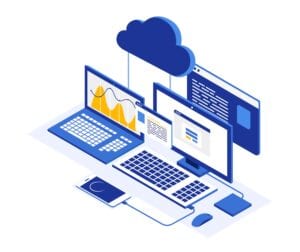Migrating from an on-premise ECM solution to a Cloud-based ECM is challenging, but following these recommendations will make the transition smoother.
Granted that you carefully considered your organizations’ needs, goals and requirements and decided that a cloud-based ECM would the appropriate solution, you still have to be careful when migrating your content to a cloud environment. Here are our advices to ensure the smooth transition of your corporate documentation to the cloud.
Implicating the Users
The biggest mistake you could make when migrating your content to the cloud (or when implementing any new ECM system for that matter) would be to not implicate your users. And here we are not only talking about the IT staff, but also users from all departments that are going to be affected by the change. Involving your users means:
- Consulting them when deciding on the system’s functionalities, most important as they are ultimately the end users
- Offering proper training on the new technology and systems, since people who have not being properly trained and familiarized with an ECM system will not use it
- Keeping them in the loop regarding the new system’s progresses and latest developments, necessary to make sure that everyone is on board and to gain their engagement and support
- Implementing a change management strategy and managing closely organizational behavior to align users’ behavior with the system’s changes.
Be mindful that users have a critical role in the deployment process of a cloud based ECM solution, as their acceptation and support of the new system will determine its success.
Testing
Conducting tests before deploying the final solution is crucial to the success of your new cloud system:
- Launch pilot migrations for every site that is planned to be created. Not only it is a great way to familiarize with the new system, but it also help figure out what works and does not, and leave you the time to reconsider your tools and functionalities if needed
- Test on various platforms and devices to ensure that the system is being deployed correctly on all of them. It is of course most important when mobile devices will be used to access the system
- Have your end users test the system, in particular pay attention to their behavior and their use of the access search platforms
Security
Obviously you do not want your data to be compromised once you moved them to the cloud, and you have to be careful during and after the migration. When dealing with a SaaS (Software as a Service, the most prevalent model among the Cloud ECM providers) Cloud ECM, there are several ways to ensure higher security levels: SSL-secured links, encryption gateways and protocols, and a clear understanding of your provider’s SLA (Service level Agreements) and security measures. If you are migrating to IaaS (Interface as a Service) – which is less common and more prone to security issues – you would be advised to check out if the vendor support data replication for the migration, a secure channel between the data center server and the cloud server (look out for FTP/SSH), and tools to move unstructured data.
On top of that, maintaining transparency across your system and organization thanks to functionalities such as audit trails and real time monitoring, is another way to preserve a secure environment for your company’s data.
Planning
We cannot emphasize it enough: planning is the key to a successful implementation and deployment.
When shifting to the cloud, maintaining the continuity of the other systems is primordial. Deploying a cloud solution may be less complex and expensive than an on-premise ECM, however it needs to be done with precautions. Integrate your cloud solution with your organization’s traditional services, and have your solution designed for reliability and continuity of service. To verify that all applications work together seamlessly, the use of monitoring tools will help to analyze their stability and performance during the migration stage.
Not only should you plan for the implementation of your system, but you should also plan for the future – both of the system and of your organization. Being scalable is one of the many appeals of the cloud, and by planning for a comprehensive ECM system that provide insights on your organization’s activity and volumes you are ensured to properly size and scale your cloud solution. Finally, another recommendations would be to verify that your ECM and cloud providers support the multivendor CMIS (Content management Interoperability Services) to avoid headaches when you happen to change for a different system or to deploy additional systems in the future.





